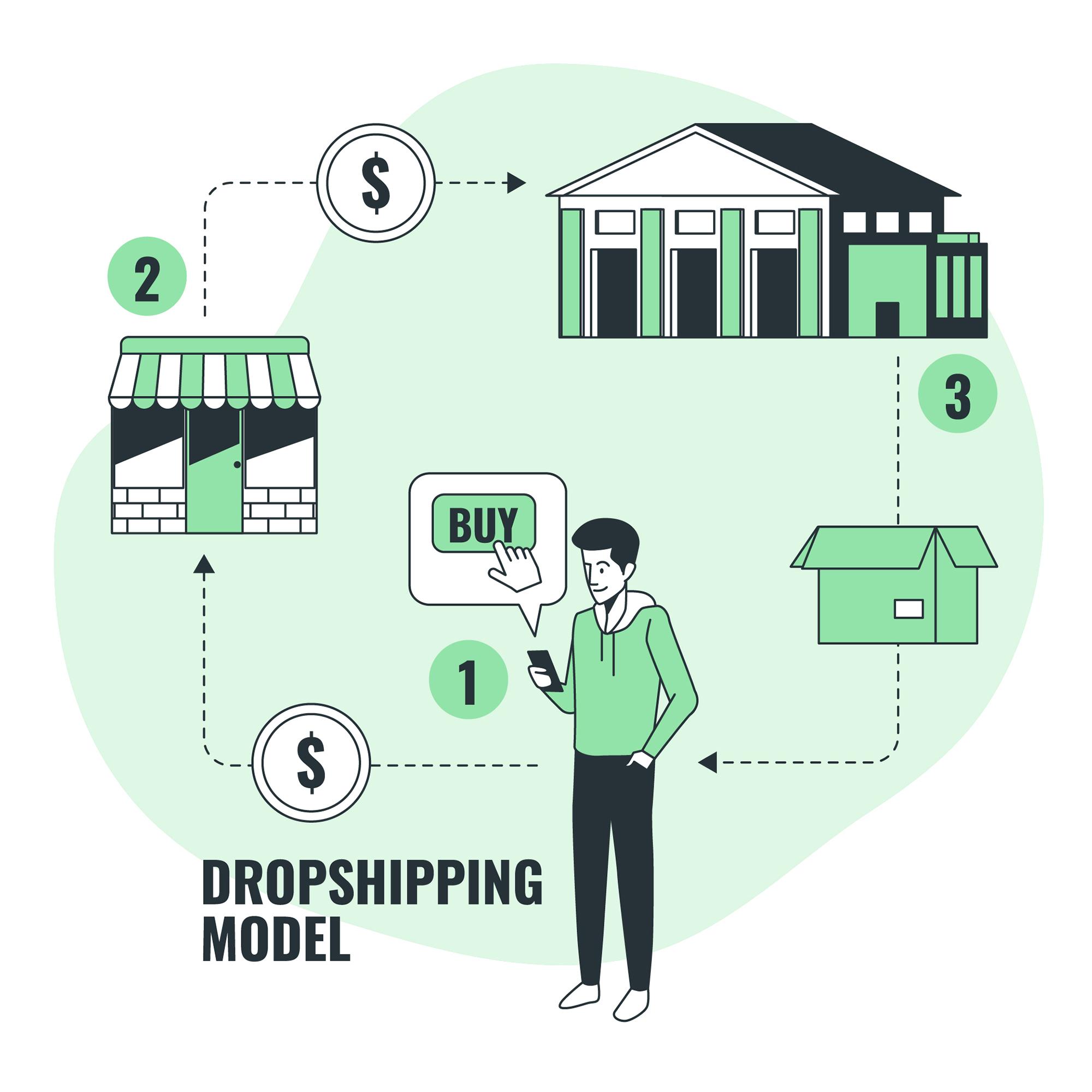
E-commerce and Dropshipping: Creating Your Online Store
In today’s digital landscape, e-commerce and dropshipping have revolutionized the way entrepreneurs launch and operate online stores. This dynamic combination offers an opportunity to build your own thriving e-commerce venture without the complexities of managing inventory. In this article, we’ll explore the steps to create your online store, delve into the world of dropshipping, and discuss how strategic planning can turn your e-commerce dreams into a lucrative reality.

1. Product Research and Selection
The foundation of a successful e-commerce store begins with meticulous product research and selection. Identify trending or niche products that resonate with your target audience. Consider factors like demand, competition, and profit margins. By choosing the right products, you increase your chances of attracting customers and generating sales.
2. Setting Up Your E-commerce Website
To establish your online presence, you’ll need a user-friendly and visually appealing e-commerce website. Platforms like Shopify, WooCommerce, and BigCommerce provide robust solutions for creating and managing your online store. Customize your website to reflect your brand identity and product offerings, ensuring a seamless and secure shopping experience for your customers.

3. Embracing Dropshipping
Dropshipping is the key to e-commerce simplicity. With this model, you partner with suppliers who handle inventory and order fulfillment. When a customer places an order on your website, the supplier ships the product directly to the customer. This eliminates the need for you to stock inventory, reducing overhead costs and operational complexity.
4. Marketing Strategies
Building a successful e-commerce business involves effective marketing strategies to attract customers. Invest in a mix of digital marketing techniques such as:
– Search Engine Optimization (SEO): Optimize your website for search engines to improve its visibility in search results.
– Social Media Marketing: Leverage platforms like Facebook, Instagram, and Pinterest to reach and engage your target audience.

– Content Marketing: Create valuable and informative content, such as blog posts, videos, or tutorials, to establish your authority and attract organic traffic.
– Email Marketing: Build and nurture a customer email list to promote products, share updates, and drive sales.
– Pay-Per-Click Advertising: Use platforms like Google Ads or Facebook Ads to reach potential customers through targeted advertising campaigns.
5. Customer Experience and Support
Exceptional customer service is paramount in e-commerce. Provide clear product descriptions, high-quality images, and an easy-to-navigate website. Offer multiple payment options and ensure secure transactions. Promptly address customer inquiries and concerns to build trust and foster loyalty.

6. Analytics and Optimization
Regularly monitor your e-commerce store’s performance using analytics tools. Analyze website traffic, conversion rates, and sales data to identify areas for improvement. Optimize your product listings, pricing strategies, and marketing efforts based on these insights to maximize your store’s profitability.
7. Scaling Your Business
As your e-commerce store grows, explore opportunities for scaling. Expand your product catalog, explore new marketing channels, and consider diversifying your product offerings. Scaling requires strategic planning and adaptability to meet changing market trends and customer demands.

In conclusion, e-commerce coupled with dropshipping provides an accessible and lucrative avenue for aspiring entrepreneurs to create their own online stores. By conducting thorough product research, setting up an efficient e-commerce website, implementing effective marketing strategies, and prioritizing customer experience, you can transform your online store into a thriving source of income. With dedication, strategic planning, and a customer-centric approach, your e-commerce venture has the potential to achieve long-term success in the digital marketplace.
This blog post contains affiliate links into which we receive a commission upon your decision to purchase a product or subscribe to a service. Thank You.
Images in this post are provided by Freepik





